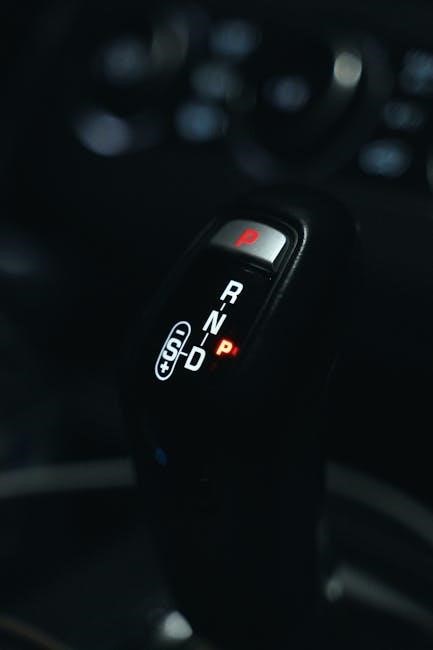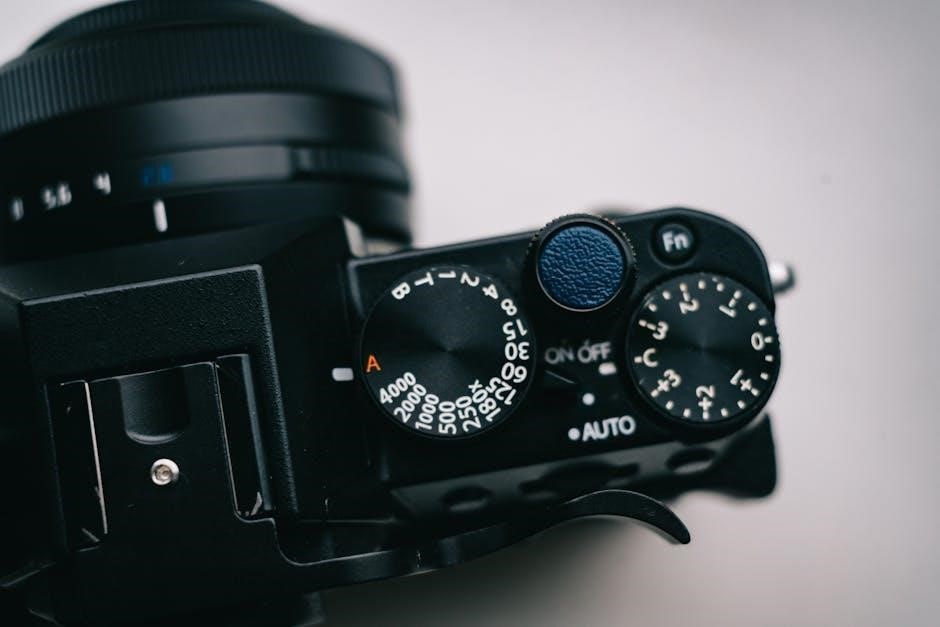Converting a manual transmission to automatic involves an intricate process that enhances driving convenience. This modification requires careful planning, compatible components, and consideration of modern driving demands.
Overview of the Conversion Process
Converting a manual transmission to automatic involves replacing the manual gearbox with a compatible automatic transmission. This process includes modifying the clutch system, adjusting the drivetrain, and integrating essential components like sensors and solenoids. Additionally, the electrical and braking systems may need updates to support the new transmission. The complexity varies by vehicle make and model, requiring precise compatibility checks and professional expertise for a smooth transition to automatic operation.
Importance of Understanding the Basics
Understanding the fundamentals of manual-to-automatic conversion is crucial for a successful outcome. Knowledge of transmission types, compatibility, and required modifications ensures informed decisions. Familiarity with mechanical systems and local regulations helps avoid costly mistakes. Proper planning prevents unexpected issues, while budgeting and assessing driving needs ensures the conversion aligns with expectations. Expertise or professional guidance is essential for handling complex steps, ensuring safety and reliability in the final result.

Feasibility of Manual to Automatic Conversion
Converting a manual to automatic transmission is feasible but requires careful evaluation of costs, compatibility, and mechanical expertise to ensure a smooth and reliable outcome.
Is It Worth Converting Your Vehicle?
Converting a manual to automatic can enhance driving convenience, especially for city driving or accessibility needs. However, the high costs and complexity often outweigh benefits for many drivers. While it offers a smoother experience, the financial investment may not justify the switch unless specific requirements make it necessary. Weighing personal preferences, budget, and vehicle usage is crucial to decide if the conversion aligns with your needs and expectations.
Key Considerations Before Starting the Process
Converting a manual to automatic is a complex process requiring careful planning. Cost, compatibility, and expertise are critical factors. Ensure the automatic transmission aligns with your vehicle’s specifications. Professional installation is often necessary due to the intricate modifications. Assess the total investment and consider whether the benefits justify the expense. A detailed plan and budget are essential to navigate this challenging upgrade successfully.

Cost Analysis of the Conversion
Converting a manual to automatic typically costs between $1,500 to $2,500, depending on the vehicle and transmission type. Professional installation is often required, adding to expenses.
Estimated Expenses for Parts and Labor
Converting a manual to automatic transmission can cost between $1,500 to $30,000, depending on the vehicle and transmission type. Parts include a compatible automatic transmission, torque converter, and adapter plate. Labor costs vary based on the mechanic’s expertise and location. Additional expenses may arise for axle regearing or overdrive units. DIY kits are cheaper but require mechanical skills. Professional installations are more reliable but significantly increase costs. Ensure budgeting for inspections and potential modifications to ensure system compatibility.
Comparing DIY vs Professional Installation Costs
DIY manual-to-automatic conversions can save money but require significant mechanical expertise. DIY kits start around $1,000, while professional installations typically range from $2,000 to $10,000, depending on complexity. Professional labor ensures reliability and warranty, often justifying the higher cost. DIY projects risk additional expenses from potential errors. Time and skill level are crucial factors in deciding between DIY and professional installation, as improper setups can lead to costly repairs or reduced performance.

Choosing the Right Automatic Transmission
Selecting the right automatic transmission is crucial for compatibility with your vehicle’s make, model, and engine specifications. Consider performance needs and drivetrain requirements for a seamless conversion.
Compatibility with Your Vehicle’s Make and Model
Ensuring compatibility is vital when converting to an automatic transmission. The transmission must align with your vehicle’s specific make, model, and engine specifications to maintain optimal performance and reliability. Researching OEM (Original Equipment Manufacturer) guidelines and consulting with experts can help identify the correct unit for your car. Additionally, factors such as torque capacity and gear ratios should be considered to ensure a smooth and efficient conversion process.
Transmission Selection Based on Engine Specifications
Selecting the right automatic transmission for your vehicle requires careful consideration of engine power, torque, and displacement. The transmission must align with your engine’s specifications to ensure optimal performance and avoid potential damage. Additionally, the vehicle’s intended use, such as towing or high-performance driving, should influence your choice. Always verify compatibility with your engine type and drivetrain to guarantee a seamless conversion and maintain the vehicle’s reliability and efficiency on the road.

Step-by-Step Conversion Process
Converting from manual to automatic involves removing the manual transmission, installing a compatible automatic unit, and integrating essential components like sensors and wiring for seamless operation.
Removing the Manual Transmission
Removing the manual transmission is the first step in the conversion process. This involves disconnecting the gearshift, clutch, and electrical connectors. Draining the transmission fluid is essential before lifting the vehicle. The manual transmission and driveshaft are then carefully removed, taking note of their positions for reinstallation. Proper handling is crucial to avoid damage to surrounding components; Once removed, the area is inspected and prepared for the automatic transmission installation, ensuring a smooth transition to the next phase of the conversion.

Installing the Automatic Transmission
Installing the automatic transmission requires precision and alignment with the engine and drivetrain. The torque converter is attached to the engine, ensuring proper engagement. The transmission is then hoisted and bolted into place, with the driveshaft reconnected. Electrical connections and fluid lines are carefully linked, and the transmission fluid is refilled. Testing the system ensures smooth gear shifts and proper function, completing this critical phase of the conversion process successfully.
Integrating Necessary Components
After installing the automatic transmission, integrating essential components ensures seamless functionality. This includes connecting the torque converter, adjusting the driveshaft, and linking electrical systems like sensors and solenoids; The transmission control module (TCM) must be configured to communicate with the engine’s ECU, synchronizing gear shifts and torque delivery. Additionally, the cooling system, transmission mounts, and gear linkages are connected to maintain optimal performance and reliability. Proper integration ensures the vehicle operates smoothly, fulfilling the conversion’s purpose of enhanced driving comfort and efficiency.

Legal and Insurance Considerations
Ensure compliance with local regulations and update your vehicle’s insurance to reflect the transmission change.Notify authorities and providers to maintain legal and financial coverage accuracy.
Ensuring Compliance with Local Regulations
Converting a manual to automatic requires adherence to local automotive regulations. Ensure the modification meets safety and emissions standards. Notify the Department of Motor Vehicles (DMV) or equivalent authority to update your vehicle’s registration and certification. Some jurisdictions may require inspections or additional documentation to approve the conversion. Failure to comply could result in legal penalties or registration denial. Always consult local laws and regulations before proceeding with the conversion to avoid potential issues.
Updating Your Vehicle’s Insurance
After converting your vehicle from manual to automatic, it’s crucial to update your insurance policy. Contact your insurance provider to notify them of the modification. Provide details about the new transmission, including its type and cost. This ensures your policy reflects the updated vehicle value. Some insurers may offer reduced premiums due to the automatic transmission’s perceived safety benefits. Failure to disclose the conversion could lead to coverage issues. Always keep documentation, like receipts, handy for verification.
Converting a manual to an automatic transmission offers enhanced convenience and ease of driving, but it’s crucial to weigh the benefits against the costs and complexity involved.
Pros and Cons of the Conversion
Converting a manual to an automatic transmission offers pros like reduced driver fatigue, smoother city driving, and enhanced accessibility for inexperienced drivers. However, the cons include high costs, complexity, and potential loss of fuel efficiency. Additionally, purists may miss the control and engagement of a manual gearbox. The decision hinges on balancing convenience, budget, and personal preference, as the conversion may not always be economically justifiable for older or lower-value vehicles.
Is the Conversion Right for You?
Deciding to convert from manual to automatic depends on your lifestyle and needs. If you seek a stress-free driving experience, especially in heavy traffic or for daily commuting, an automatic is ideal. However, if you value driver engagement or have budget constraints, sticking with manual might be better. Assess factors like cost, vehicle usage, and personal preference to make an informed choice that aligns with your driving habits and long-term goals.
